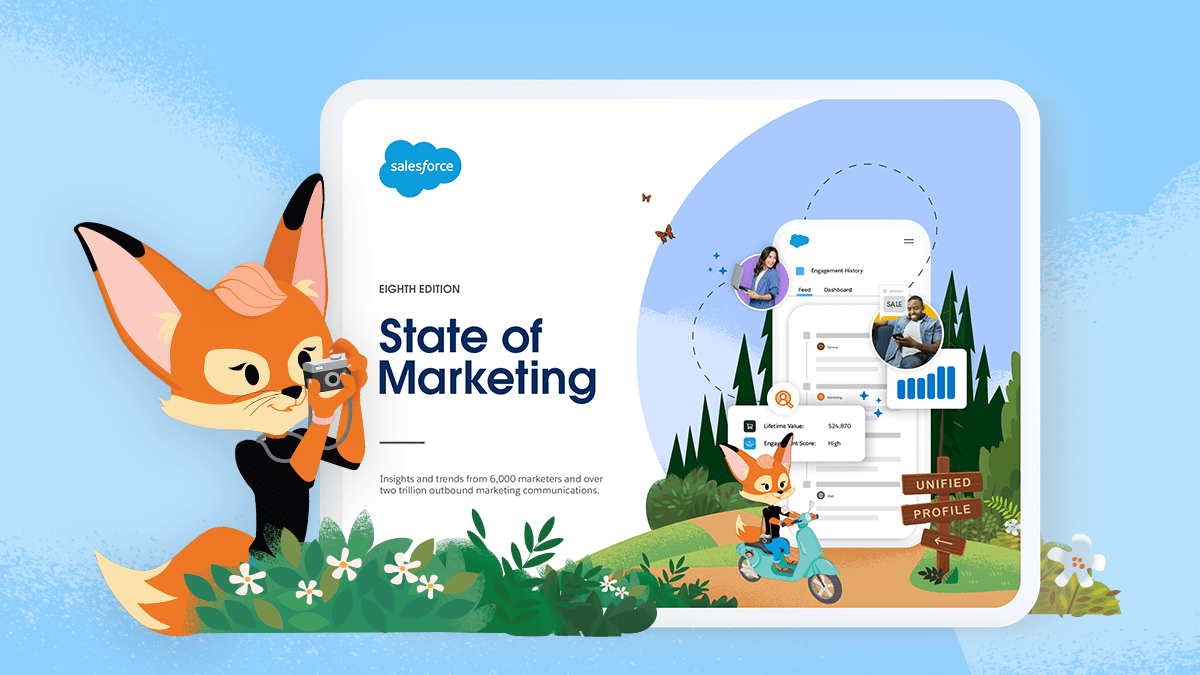Today’s marketing landscape has some unique challenges. Changing consumer preferences, shifting buying behaviours, and rising customer expectations are all having a major influence on the marketing strategy as revealed in the 8th State of Marketing Research.
So what can marketers do to keep driving value?
Until recently, advertising was the main driver for new customer acquisition for many brands. But advertising has gone up in price by 60-70% year-on-year. And even then, you’re not necessarily hitting the right audience. Because while prices are increasing, the quality of audience segmentation is declining due to the loss of cookies.
The 8th Edition State of Marketing Report
Insights on changing trends, priorities, and challenges define the profession according to 6,000 global marketers and trillions of outbound marketing messages.

Sure, marketers can keep doing what they’ve always done. But it’s becoming evident that this won’t necessarily attract customers or keep them engaged for long enough. Especially when digital natives are disrupting industries we never thought would go digital. Everything from grocery shopping and online beauty services to mortgages and healthcare counselling.
On top of that, in-house customer data is getting harder to leverage because of siloed systems. Working in silos leads to inconsistent customer profiles. Despite this shortcoming, these fragmented records are used for offering experiences across the various touch points. The result? Poor customer experience, decline in loyalty and, ultimately, revenue losses.
Choosing the right CDP
We know that customer data is instrumental in driving better marketing. Making sure you’re using the right Customer Data Platform (CDP) is crucial for adapting to shifting market challenges.
First-generation CDPs have been around for a long time. But are they enough? In today’s economic climate, it’s simply not sufficient to be data-rich and have your records neatly stacked up for an occasional quarterly analysis.
In order to regain your competitive advantage and hold ground in times of economic downturn, you need to do more. Your marketing, commerce, service, sales, and other teams all need to follow a data-led approach to serving customers.
But how? It requires putting an analytics dashboard shortcut on every desktop and zooming in on customer behaviour data in every meeting. This real-time data intelligence is your timely, reliable feedback loop about the market as it stands. It informs the next best step for a product or campaign.
We have the technological tools. The question is, are we diligent and consistent enough when it comes to using those tools to inform better quality decisions?
Collaboration tools like Slack help marketers stay ahead of the competition. Allowing them to move at the speed of change, collaborating and connecting with both internal and external stakeholders. Besides speed, intelligent decision-making requires real-time data and the ability to adapt marketing messages and campaigns based on immediate audience feedback and knowledge about changes in your market.
*Data is from a survey of 3,706 Salesforce customers across the US, Canada, the UK, Germany, France, Australia, India, Singapore, Japan and Brazil conducted between June 8 and June 21, 2022. Results were aggregated to determine the average perceived customer value from the use of Salesforce. Respondents were sourced and verified through a third-party B2B panel. Sample sizes may vary across metrics.
Three benefits of a data-led approach
Here are three clear ways real-time data and process automation will help you reach your business goals, faster:
Increased revenue
We know by now that harmonised and processed data goes beyond just better audience segmentation. Feeding this data into AI models improves the next best action and product recommendations.
With accurate and timely customer preferences unlocked, your marketing and commerce teams can then design product offers with the highest margins. This means every recommendation and every customer transaction becomes not just more personalised, but also more profitable as a result. You can take the increased revenue and profitability numbers to your next management meeting. Translating the success of marketing and tech into the language of your CFO.
More focus on priority tasks
With efficiency a high priority for most businesses, the automation of routine tasks is a key effort in optimising resources. By removing the manual integration of data and activation systems, you get to free up your talent for making strategic decisions and meeting the business goals.
Gone are the days of waiting for people to get around to doing things because automation now sets the pace. Meaning your teams can do more with less, faster, and avoid human error.
Time for innovation
Company leadership expects more from technology than they did even a couple of years ago. With budgets getting tight and good talent harder to hire, they look at technology to not just help automate processes, but to provide valuable feedback from the market.
Historically, marketers have been at the forefront of innovation. And, current times offer an excellent opportunity for a CMO’s team to lead the way in customer-facing parts of the business leaning on the rich customer data they hold. By becoming data-led, embracing automation, and increasing the bottom line through higher-quality decisions.
Using data to listen to your customers can help drive value
By having some of the key technological challenges solved, marketers can finally focus on the complex things they’re being asked to do. Things like designing multichannel strategy, producing dynamic creative, working on cross-team projects, and creating complex journeys, and data relationships.
The latest 8th State of Marketing research is clear on this. Where customers lead, marketers follow. The most successful marketers do, at least. And with a wealth of new digital channels available to reach their customers, experimenting with what works best in an agile manner is the way forward.
To remain relevant and competitive, you need to listen to what your customers are telling you. And the data you hold tells the most complete story.
Enjoy the benefits of a CDP that delivers exactly what you need
The entire Salesforce ecosystem is designed to facilitate, up-skill, and support the need for organisational change. Our Customer Data Platform, along with a full suite of Customer 360 business applications, can help drive better business outcomes.
Salesforce customers report labour cost-savings, higher profitability, increased team efficiency, and overall maturity of the digital CX within their businesses. Combining the benefits of Salesforce CDP and a data-led approach across all of a business’s functions leads to these outcomes and more.
Get the 8th State of Marketing report to learn how marketers across 35 countries are tackling these and other challenges.
The 8th Edition State of Marketing Report
Insights on changing trends, priorities, and challenges define the profession according to 6,000 global marketers and trillions of outbound marketing messages.

























